Contents
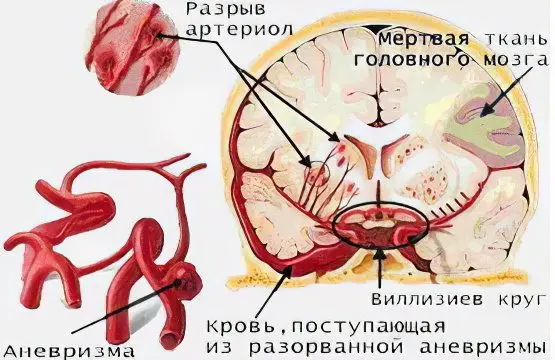
Strokes are characterized by a variety of causes that cause the disease. It has been proven that the etiology of stroke in women and men in some cases differs. The causes of stroke in women mainly lie in the plane of the pathophysiology of the fertile period and menopause, in men they are more often due to occupational risks and bad habits. Differences in the pathogenesis and consequences of stroke in gender groups are associated with the same features.
What is a stroke?
Stroke – this is an acute violation of cerebral circulation (ACC) – the result of one of two reasons:
Narrowing or blockage of blood vessels in the brain – ischemic stroke;
Hemorrhages in the brain or in its membranes – hemorrhagic stroke.
Strokes occur in people in a wide age range: from 20-25 years to old age.
Strokes in young and middle-aged people
Ischemic stroke – has common etiological factors for women and men (arterial hypertension and atherosclerosis).
Ischemic stroke factors with gender predisposition:
In women, heart rheumatism in combination with cardiogenic cerebral embolism (blockage of the middle cerebral artery by a fatty or air embolus formed in the left heart);
In men, traumatic occlusion of the vessels of the neck (trauma and subsequent blockage of the carotid artery located in the muscles of the neck).
Hemorrhagic stroke – has common etiological factors for women and men (arterial aneurysms, arterial hypertension, arteriovenous aneurysms).
Hemorrhagic stroke factors with gender predisposition:
In women – arterial hypertension;
In men – arterial aneurysm, post-traumatic dissection of the arteries, subarachnoid hemorrhages.
In young women during gestation (carrying a fetus), hemorrhagic stroke develops eight to nine times more often than in men of the same age.
Features of the clinical course and consequences of strokes in young people vary greatly. In ischemic stroke, the disease often occurs in the presence of clear consciousness and develops against a background of moderate neurological deficit. Severe forms of stroke in women develop according to the type of cardiogenic cerebral embolism, in men according to the type of atherosclerosis and thrombosis of the main arteries.
Strokes in the elderly
Between the ages of 65 and 79, strokes are more common in men, and after 80 years, in women.
The main causes of stroke in the elderly are:
In men – arterial hypertension, high cholesterol in the blood;
In women – atrial fibrillation, stenosis of the carotid arteries, coronary heart disease, cardiovascular insufficiency.
Features of the clinical course and the consequences of strokes in the elderly do not depend much on gender. The disease usually occurs against the background of a pronounced neurological deficit with a high level of disability. This is due to the difficult state of health before a stroke: chronic diseases, age-related changes in brain structures. Patients over 65 years of age have a threefold increased risk of recurrent stroke compared with those who had a stroke at a young age.
How many years do people live after a stroke?
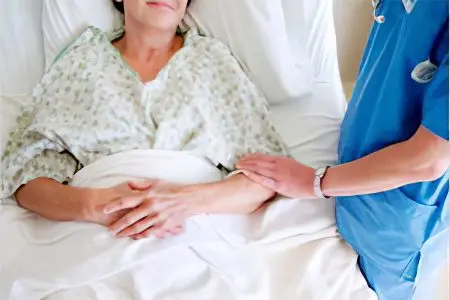
There is no definite answer to this question. Death can occur immediately after a stroke. However, a long, relatively full life for decades is also possible.
Meanwhile, it has been established that mortality after strokes is:
During the first month – 35%;
During the first year – about 50%.
The prognosis of stroke outcome depends on many factors, including:
The age of the patient;
Health conditions before stroke;
Quality of life before and after a stroke;
Compliance with the regime of the rehabilitation period;
Complete elimination of the causes of stroke;
The presence of concomitant chronic diseases;
Presence of stress factors.
The main risk factors for stroke (“deadly quintet”):
Hypertension
hypercholesterolemia;
Diabetes;
Smoking
Hypertrophy of the left ventricle of the heart.
The combination of 2-3 of these factors significantly increases the risk of an adverse outcome of the disease.
stroke death statistics
From 5 to 6 million strokes are diagnosed annually in the world, in Russia – up to 450 thousand. For this reason, 29% of men and 39% of women die. 3,2 people per 10 become disabled. During the first month, up to 35% die, and by the end of the year – up to 50%. Recurrent strokes are dangerous. In the first year, relapse develops in 5-25%, within three years – in 20-30%, within five years – in 30-40% of those who have been ill. The highest risk of stroke in people over 65 years of age, the incidence in this age segment is up to 90% of all cases. At the same age, the highest number of deaths. Up to 80% of strokes develop as ischemic brain pathologies with a mortality rate of up to 37%. The remaining 20% of patients with hemorrhagic stroke have a mortality rate of up to 82%.
The reason for the high mortality from stroke in Russia is the rapid aging of the population, late delivery to a medical institution, poor educational work and insufficient stroke prevention measures. Recent statistics show that 39,5% of people at risk of stroke do not think about its danger.
Stroke rarely occurs without previous symptoms – the initial manifestations of insufficient blood supply to the brain (NPNKM) in the form of transient attacks or hypertensive crises in individuals at risk. The risk group for NPCM includes people with hypertension, heart rhythm disturbances, chronic stress, a history of chronic diseases, smoking, a tendency to aggregation of blood cells, and overweight.
Causes of Stroke

The causes of stroke include ischemia (impaired blood supply), embolism (blockage of blood vessels by an embolus), thrombosis, atheroma (degenerative change in the walls of blood vessels) and intracerebral hemorrhage. Thrombosis is the process of formation of blood clots. If a blood clot occurs in a blood vessel that feeds the brain, it leads to swelling of the brain tissue.
Thrombosis often develops in the morning or at night after surgery or a heart attack. It is thrombosis that causes most strokes that occur in older people. Most often, thrombosis occurs in people who are overweight, in those who abuse smoking, and in women who are protected by oral hormonal contraceptives. At the moment, thrombosis can also develop in very young people who take cocaine.
A hemorrhage occurs when an artery in the brain ruptures. This type of stroke can happen at any age. Hemorrhage occurs with high blood pressure. This type of stroke can occur with hardening of the arteries, arrhythmia, diabetes, low or sudden high blood pressure, sedentary lifestyle, smoking, use of oral contraceptives.
In an embolism, a clot of fatty substances (embolus) forms in a blood vessel. Getting stuck in the vessels, the embolus blocks the blood flow. This type of stroke can occur after heart surgery or with an arrhythmia.
Symptoms of a Stroke
Signs of the disease, identified by doctors on the basis of general clinical, instrumental and laboratory studies of the patient in order to make a diagnosis, are called symptoms. The first symptoms of a stroke are determined by a doctor or paramedic on scales (GCS / FAST). Based on many years of research, the most common symptoms of stroke have been identified, which are divided into two conditional groups.
Cerebral symptoms characteristic of many pathologies associated with brain damage are dizziness, lightheadedness, stupor, or agitation.
Focal symptoms – sudden paresis, paralysis, loss of vision or change in the position of the pupil, uncertain speech, impaired coordination of movement, rigidity (pathological tension) of the neck muscles.
The first symptoms of a stroke
A patient with a suspected stroke is admitted to the neurological department or intensive care unit. Hope for a favorable outcome (maximum rehabilitation of the patient) is possible during the first three to six hours from the onset of a stroke to the start of intensive care or resuscitation. The first symptoms that reliably indicate a certain type of stroke:
Hemorrhagic stroke – bleeding (hemorrhage) in the tissues of the brain;
Ischemic stroke is an area of infarction (necrosis) in the brain tissue.
These signs are detected using CT, MRI, EEG. link
Symptoms of cerebral or focal lesions of the brain, obtained by publicly available methods, are not always the result of a stroke. Work on the classification of vascular lesions of the brain began in 1971 by E.N. Schmidt, in the final version proposed by him in 1985.
Signs of a stroke in women and men
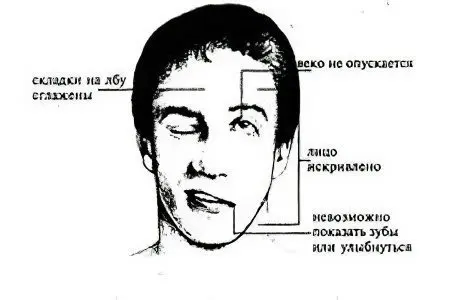
Signs of a stroke are a subjective (personal) feeling of a person or an objective (obvious) description of the disease by an outside observer, which serves as a reason for the patient to seek help from a medical institution.
Signs of a stroke should be known to all people, regardless of their medical education. These symptoms are primarily associated with a violation of the innervation of the muscles of the head and body, so if you suspect a stroke, ask the person to perform three simple actions: smile, raise their hands, say any word or sentence.
If a person has a stroke, this simple test will show the following results:
The smile looks unnatural, the corners of the lips are located on a different line, which is associated with a limitation or complete impossibility of contraction of the facial muscles;
The raising of the hands looks like an asymmetrical action, the hand on the affected side has no power, that is, it spontaneously falls, the handshake is weak;
The pronunciation of words or phrases due to paresis or paralysis of the muscles of the face is difficult.
There are other similar tests. Unfortunately, the detection of signs of a stroke means a statement (confirmation) of the onset of irreversible consequences in the brain. The faster qualified assistance is provided to the patient, the greater the chance of eliminating the consequences of a stroke.
Signs of some types of stroke (ischemic) appear before the development of changes in the brain tissues. Such signs are called the initial manifestations of insufficiency of blood supply to the brain (NPNKM), they consist in transient (passing) ischemic attacks or hypertensive crises. Their timely detection is recommended to prevent the development of clinical forms of stroke.
NPNKM is easy to determine at home using the questionnaire L.S. Manvelov. One positive answer (+) is equal to one point. To confirm the diagnosis, answer at least two (+) questions about the presence of the following sensations at least once a week or constantly during the last three months:
Headache without a clear localization, not due to hypertension, often associated with overwork and weather changes: (+) or (-);
Dizziness, aggravated by a change in body position in space: (+) or (-);
Noise in the head constant or transient: (+) or (-);
Violation of memory, which extends to current events, logical memory, as a rule, does not suffer: (+) or (-);
Violation of sleep and / or performance: (+) or (-).
If the examined person scored two or more points, this means that he has prerequisites for the rapid development of a stroke. You should contact the local therapist to get a referral to a neurologist for laboratory and instrumental examinations and treatment.
A stroke does not always have signs visible to outsiders. Sometimes they are obvious only on the basis of personal feelings when performing habitual actions, for example, characteristic only for women or only for men.
First aid at the first signs of a stroke
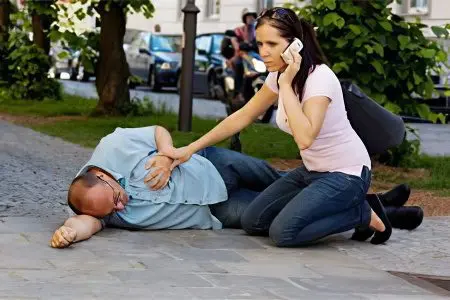
After identifying signs of a stroke, you must perform the following actions:
Call an ambulance, the call is free:
call from landline phone 03;
call from mobile phone 112 or 03*.
The patient should take a horizontal position on the bed, the head is slightly higher than the body:
if there are dentures, eye lenses, glasses – remove;
if the patient is unconscious, help him open his mouth, tilt his head slightly to one side, and monitor his breathing.
Before the ambulance arrives:
write down the names, dosage and frequency of medications taken by the patient;
write down the names of drugs intolerable to the patient (if any);
prepare a passport, a medical insurance policy, an outpatient card, if the patient has it.
Provide the emergency physician with known information about the patient.
If possible, accompany the patient to the emergency room of the hospital.
Assistance to the patient in a hospital is provided in accordance with the standards of medical care for patients with stroke, approved by the Order of the Ministry of Health and Social Development of the Russian Federation dated August 01.08.2007, 513 N XNUMX.
temperature during stroke
A number of scientific publications testify to the negative impact of high temperature on the outcome of stroke. At the same time, the use of low temperature (hypothermia and normothermia) in the neuroprotection of brain cells during the treatment of cerebrovascular accidents has been reported.
The pathogenesis of strokes is largely determined by the state of thermoregulation of the patient. One of the causes of coma in a patient with a stroke is a violation of thermoregulation.
Hyperthermia is diagnosed in 40-70% of patients with hemorrhagic stroke and in 18-60% with ischemic stroke.
The leading cause of hyperthermia in stroke is purulent-inflammatory processes in the body, which developed as complications of pneumonia, urinary tract infections, bedsores.
The second cause of hyperthermia is supratentorial brain tumors. An increase in temperature with them does not depend on purulent processes in the body.
The method of hypothermia in order to preserve brain structures damaged as a result of a stroke was widely used until the 70-80s of the last century. The promising method was abandoned due to numerous complications. At present, with the discovery of new tools and methods in biology and medicine, the use of hypothermia in stroke is again widely discussed with the aim of neuroprotection of neurons from the cascade of pathological reactions in the brain during stroke in the first stage.
Classification and types of stroke:
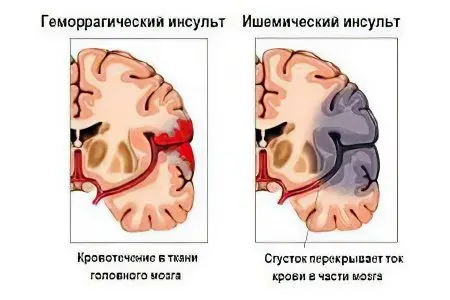 |
Ischemic stroke
Ischemic stroke(IS) – the most common form of CVD. According to various sources, up to 80% of all strokes are ischemic. AI has another name – cerebral infarction, that is, a focus of necrosis formed on the periphery of the site of blood flow delay. Necrosis in IS is the result of metabolic disorders in brain cells with symptoms of blood stagnation in the area of the nervous tissue.
Stenosis (narrowing) or occlusion (blockage) of large arterial vessels of the brain;
Thrombosis – blockage of an arterial vessel by a thrombus (thrombus – a clot of blood cells);
An embolism is a blockage of an arterial vessel by an embolus (an embolus is a clot of fat cells that are not normally present in the bloodstream).
Causes of stagnation of blood in the blood vessels of neuronal and glial tissues of the brain:
Hemorrhagic stroke
Hemorrhagic stroke (HI) is the most dangerous form of stroke. According to various sources, the lethal outcome of GI is up to 82% of cases. GI is the result of a rupture of a blood vessel and the formation of a blood clot in this place and then a site of necrosis. The more severe pathogenesis of HI compared to IS is explained by the development of a focus of hemorrhagic stroke and layering of ischemia.
The development of hemorrhagic stroke at the first stage occurs in the following sequence:
Hematoma causes direct mechanical compression of the brain tissue,
An ischemic zone is formed in this area;
Hematoma and ischemia around it trigger a cascade of pathogenetic processes.
The volume of hematoma in HS is several times less than the extensive ischemia around the focus of hemorrhagic stroke.
Major stroke
Massive stroke is a generalized name for massive strokes. According to the classification of acute cerebral ischemia (E.I. Gusev, 1962), OI corresponds to a severe stroke with pronounced cerebral symptoms:
Oppression of consciousness;
swelling of the brain;
Hemiparesis or hemiplegia on the opposite side of the lesion;
Paresis of gaze towards paralyzed limbs;
A disorder of consciousness in the form of hemispheric damage (aphasia – a speech disorder, geminopsia – loss of half of the field of vision, anosognosia – a patient’s misunderstanding of their condition);
Autonomic disorders – disorders of the nervous regulation of internal organs and body systems.
Trophic disorders – disorders of nerve conduction, which are manifested by skin ulcers.
Massive strokes are complicated by a secondary type of stem syndrome in the form of impaired consciousness and oculomotor disorders:
Anisocoria – changes in the size of the pupil, it is enlarged on the side of the affected hemisphere;
Ophthalmoplegia – weakening or lack of pupillary response to light;
Strabismus and strobism (pendulum-like movements of the eyeballs);
Hormetonia – generalized disorders in the form of muscle spasm of tonic muscles;
Decerebrate rigidity – increased tone of the extensor muscles,
By localization, extensive strokes correspond to lesions in the pools of large precerebral and cerebral main arteries (classification by E. V. Schmidt, 1985 and ICD-10).
Information on the comparison of the incidence of major strokes in men or women was not found. Extensive strokes are a common cause of death of patients or long-term (lifelong) disability.
Lacunar stroke (LI)
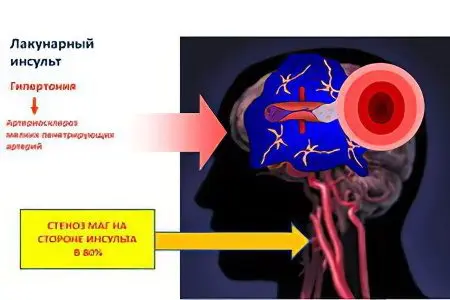
Lacunar stroke is a type of ischemic cerebral infarction. LI is characterized by a limited lesion of one of the small perforating arteries. Perforating arteries are small vessels ranging in size from fractions to 2 mm, with a length of up to 10 cm, connecting the larger deep and superficial arteries. The name “lacunar stroke” was obtained in connection with the formation of round-shaped cavities (lacunae) at the site of infarction (less than 1,5 cm in diameter), filled with liquid contents – cerebrospinal fluid.
The incidence (occurrence) of lacunar stroke averages 20% of all ischemic strokes. They are not characterized by cerebral and meningeal symptoms.
Atactic hemiparesis – impaired coordination of half of the body;
Dysarthria – a violation of the clear pronunciation of words;
Monoparesis is a violation of the motor activity of one arm or leg.
Lacunar stroke is detected by focal symptoms:
Of the group of patients with a diagnosis of lacunar stroke, women account for approximately 54%, men – 46%. The average age of patients diagnosed with LI is from 48 to 73 years.
The most common cause of lacunar stroke is atherosclerosis against the background of arterial hypertension. The embolic nature of LI has also been proven; in this case, the disease is more severe for patients due to the involvement of a larger area of the brain in the pathogenesis after blockage of the vessel by an embolus. The prognosis of lacunar stroke depends on the location of the focus and the time of initiation of treatment.
spinal stroke
spinal stroke – This is an acute violation of blood circulation in the spinal cord. The causes of spinal stroke can be ischemic or hemorrhagic stroke of the brain. The usual location of spinal stroke is in the large arteries of the cervical and lumbar thickening or small branches of the reticulo-medullary arteries.
SI is more common in the elderly. Differences in the pathogenesis of spinal strokes in men and women have not been identified.
There are no exact data on the prevalence of spinal strokes. This is probably due to the difficulty of differential diagnosis. More accurate diagnosis became possible after the widespread introduction of CT, MRI and selective spinal angiography.
Some sources indicate the following harbingers of a spinal stroke:
Radicular syndrome – pains of different localization (neck, arms, legs, lower back);
Chronic vascular and spinal insufficiency (CSMI);
Periodic severe headaches;
Noise and heaviness in the head;
short-term dizziness;
Increased fatigue and sleep disturbance;
memory impairment;
Myelogenous intermittent claudication syndrome – a feeling of numbness in the legs during long walking with a rapid disappearance after rest, there is no pain in the legs.
The clinical picture of SI is varied, it depends on the location of the stroke focus in the spinal column.
Ten spinal ischemic syndromes:
ventral half of the spinal cord or blockage of the anterior spinal artery or Transfiguration syndrome;
Anterior poliomyelopathy;
Brown-Sekara;
centromedullary stenosis;
The marginal zone of the anterior and lateral cords;
Amyotrophic lateral sclerosis;
Dorsal part of the diameter of the spinal cord (Williamson’s syndrome);
The diameter of the spinal cord;
Occlusion of the artery of the cervical thickening;
Shutting off the artery of the lumbar thickening.
Diagnosis and differential diagnosis of SI is carried out using instrumental methods.
Acute stroke
This is the initial period of development of a stroke. It lasts an average of twenty-one days, sometimes less. During this period, there is an increase in pathogenetic processes in the brain tissues, especially intensively during the first six hours of the disease.
There are the following stages of OI:
Formation of a nucleus from damaged brain cells – 5-8 minutes;
Enlargement of the penumbra (areas of metabolic changes around the core of the brain infarction):
by 50% within 1 hour 30 minutes;
by 80% within 6 hours.
Next, there is the formation and / or increase of neurological disorders in the form of cerebral and focal symptoms.
Intensive care during the “therapeutic window” includes:
Improving the hemodynamics of brain tissues due to the drip of physiological solutions;
Neuroprotection (protection) of brain cells.
Improvement of rheological (viscosity) and coagulation (clotting) properties of blood;
Improvement of blood microcirculation.
Prevention of cerebral edema.
Micro stroke
It is also called a small stroke (MI). The name is given because of the relatively fast (2-21 days) disappearance of symptoms of neurological deficit.
Neurological deficit syndrome is accompanied by two to three or more of the following symptoms:
Uncertain gait;
Muscle hypertonicity;
Mono- or hemiparesis;
Paralysis of the eye or head;
Aphasia/anosmia;
Seizures/epilepsy;
Unreasonable joy/rage.
With a microstroke, foci of cell necrosis are formed and persist in the brain. The symptoms of MI are similar to those of transient ischemic attacks (TIA).
The fundamental difference between a microstroke and transient ischemic attacks is that with TIA:
There are symptoms of a neurological deficit;
CT / MRI does not reveal a focus of necrosis (ischemia) in the brain.
The development of a small stroke is noted in the age group from 25 to 45 years. Sex correlation has not been established.
The causes of MI are a combination of several of the following factors:
arterial hypertension;
Regular intake of oral contraceptives and other drugs that increase blood viscosity;
venous thrombosis;
Systemic blood diseases;
Migraine;
Drugs, alcohol;
Head and neck injuries.
A microstroke is a risk factor for the development of one of the types of completed stroke. Frequently repeated MI is the cause of decreased intelligence and dementia.
Repeated stroke

The main cause of recurrent strokes is cerebrovascular disease (CVD). It should be considered that CVD is strokes and TIA. During the first year, people who have had extensive strokes may develop:
repeated strokes;
Dement disorders (acquired decrease in intelligence to varying degrees);
Lethal outcome.
Influencing risk factors is a real chance of preventing recurrent strokes. Prevention must be consistent and continuous.
The standard algorithm for influencing risk factors in secondary stroke is designated as A-B-C therapy (A – antihypertensive, B – blockers, C – statins). For the prevention of recurrent strokes are used:
Antihypertensive drugs (micardis, agrenox);
Thrombus blockers (aspirin, warfarin, agrenox, clopidogrel);
Statins to counteract the formation of cholesterol. Drugs from the statin group are used to block the enzyme (HGM-CoA) involved in the production of cholesterol. For this purpose, lovastatin, fluvastatin, atorvastatin, rosuvastatin and others are prescribed.
Risk factors for stroke

Smoking and drinking alcohol are among the main risk factors for stroke, especially in older people. Smoking and alcohol together greatly increase the risk of developing cardiovascular diseases, in addition, drinking alcohol contributes to weight gain.
Taking certain medications without a doctor’s prescription puts you at risk of developing heart and blood disease, which can lead to a stroke. The likelihood of developing a stroke is significantly increased with the use of oral contraceptives containing estrogens. This risk is increased when oral contraceptives are used by women who smoke and have high blood pressure.
It is necessary to monitor the level of cholesterol in the blood, since its high content is one of the risk factors for stroke. Improper (supersaturated fat) and irregular nutrition leads to an increase in cholesterol levels.
Arterial hypertension greatly increases the risk of stroke, especially in combination with all of the above factors. You need to be more careful in pregnant women suffering from arterial hypertension, and women taking oral contraceptives.
One of the reasons for the development of cardiovascular diseases is hypodynamia (sedentary lifestyle). It is necessary to do exercises daily, jogging and walking in the fresh air. The implementation of these recommendations has a beneficial effect on the content of sugar in the blood and helps to lower blood pressure. The risk of stroke in people with high weight is huge, even in the absence of other risk factors. Heavy weight contributes to the development of high blood pressure, the onset of diabetes and creates an increased load on the heart muscle.
The risk of stroke increases in people with diabetes. A huge percentage of diabetic patients die from the consequences of a stroke.
The mental state of a person plays a huge role in the occurrence of a stroke. Stress, anxiety, nervous stress increase the risk of developing the disease, especially for people who have already had a stroke.
The consequences of a stroke

Excluding deaths, some patients return to normal or partially limited work activity. With a slow recovery of body functions and the impossibility of returning to work within 3-3,5 months, the patient is sent for a medical and social examination (MSE). The medical commission (MC) decides whether to continue treatment on a sick leave or whether it is necessary to determine the III or II disability group. When considering the grounds for disability, the VC takes into account the persistence and duration of the consequences of a stroke:
Pyramidal defects (motor disorders – paresis, paralysis);
Extrapyramidal motor (speech disorder, slow movements of the acting side of the body, inability to self-service);
Extrapyramidal hyperkinesis (decrease in motor functions, inability to maintain a certain posture);
Atactic disorders;
Violations of visual functions in the form of partial or complete loss of vision;
Brain dysfunctions in the form of aphasia;
epileptic seizures;
Oppression of mental functions (dementia);
Complications from the cardiovascular system (peripheral edema, weakness).
Swelling of the legs after a stroke
Edema is referred to as a long-term consequence of a stroke, caused by the insufficiency of the cardiovascular system of the body. Edema is characterized by:
Slow development and persistence for several hours;
Localization on the limbs, spreading from bottom to top and symmetry;
Dense consistency, when pressed, a hole remains.
Of the available means of preventing edema of the legs, it is allowed to use diuretic preparations of plant origin (canephron, cystone), medicinal herbs or fees that have a diuretic effect. Carefully apply ointments and liquids as rubbing, skin injury is possible.
Cerebral edema in stroke
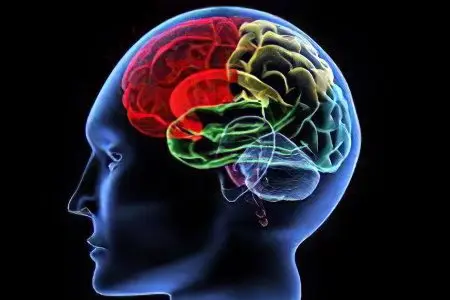
This complication can develop at any stage of a stroke, more often during the first hours of pathogenesis. Cerebral edema is an increase in intracranial pressure due to pathological swelling of the glial tissue of the brain. Cerebral edema in stroke is a consequence of a violation of cerebral circulation caused by blockage of a large vessel of the brain and its pool and effusion of the liquid part of the blood outside the vascular bed.
Prevention of cerebral edema is a mandatory component of the treatment of the initial period of a stroke, regardless of the presence of symptoms.
Activities are carried out by a specialized team authorized to treat critically ill patients.
The team does the following.
Supports stable hemodynamics;
Selectively controls blood pressure (only with hypertension and / or with the simultaneous development of pulmonary edema, some other conditions), clonidine, captopril, atenolol, labetalol, benzohexonium and others are indicated, blood pressure cannot be reduced by more than 15% of the initial level;
Prevents swelling of the brain and lungs, artificial ventilation and drug therapy are indicated;
Stops the syndrome of psychomotor agitation and / or convulsive syndrome, benzodiazepine drugs are indicated, a non-narcotic dose of sodium oxybutyrate;
The temperature is above 37,5 ° C, it is advisable to reduce, paracetamol and physical methods are indicated;
Controls blood glucose levels. In hyperglycemia, short-acting insulin is indicated. Intravenous administration of glucose is contraindicated. Not recommended: dibazol, nifedipine, eufillin, vinpocetine, nicergoline, papaverine, furosemide and mannitol without monitoring blood osmolarity.
Paralysis after a stroke
Movement disorders of varying degrees of regression are frequent companions of strokes.
Usually, violations manifest themselves in the form of paresis (partial loss of the ability to move) and paralysis (complete loss of motor activity).
With strokes observe:
Monoplegia – paralysis of one limb (arm or leg);
Hemiplegia – paralysis of the arms and legs of one side of the body;
Paraplegia is the paralysis of two arms or legs.
Peripheral paralysis is characterized by a complete lack of motor activity in the affected area of the body.
For central paralysis, synkinesis is characteristic – friendly movement. In synkinesis, the paralyzed arm or leg does not act independently, but when the healthy arm or leg is raised, the paralyzed limb performs a similar movement.
Simultaneously with paralysis, speech disorders occur in the form of aphasia or difficulty in pronouncing words, as well as misunderstanding of one’s own speech errors.
Coma after stroke
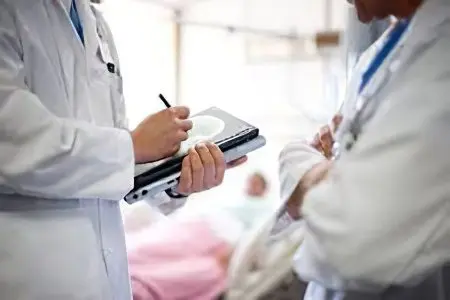
Coma after stroke – depression of the central nervous system as a result of secondary disorders of cerebral circulation, or apoplectiform coma. It develops against the background of stroke and an increase in body temperature, as a result of necrotic processes in the brain and purulent pathologies (complications in the form of bedsores and others).
Coma is characterized by stages, it begins with precoma – confusion of consciousness.
The regression of reflexes manifests itself in the form of four stages:
Stun – 1 stage;
Deep sleep (sopor) – stage 2;
Loss of corneal and ocular reflexes – stage 3;
Loss of deep reflexes, muscle atony – stage 4.
How long does a coma last after a stroke?
The duration of a coma after a stroke is from several hours to several weeks.
The duration of the coma depends on:
Its depths – at stages 1-2, it is possible to withdraw from a coma, at stages 3-4, the prognosis is unfavorable;
The general condition of the patient’s body;
Completeness of measures to support the life of the patient;
Thoroughness of care for the patient who is in an unconscious state (prevention of bedsores).
Coma 3 degrees
The third degree is also called atonic coma.
Signs of coma III degree are manifested:
Absence:
pain response;
corneal reflexes (eye closing in response to corneal irritation);
pupillary reactions (lack of reaction to eye illumination).
Decrease:
glottic reflex;
tendon reflexes;
muscle tone;
blood pressure;
body temperature;
breathing rhythm.
Involuntary actions:
paralytic miosis (permanently dilated pupil);
local or generalized convulsions;
acts of urination and defecation.
Forecast
The prognosis of the outcome of a stroke in a stage III coma (atonic coma) is “poor” or “lethal”. The basis of the medical decision is the absence of vital signs of the patient’s habitus.
A lethal prognosis of the outcome of a stroke can also be in the case of:
Extensive bleeding with severe hormetonic syndrome (attacks of increased muscle tone in the initial stages of coma);
Gross respiratory failure;
Hyperthermia above 40-42 °C;
Repeated stroke with severe residual effects (paralysis, dementia disorders);
Stroke on the background of oncology in the incurable (hopeless) stage.
A favorable outcome is possible with:
Transient ischemic attacks (pre-stroke state);
Small strokes (micro strokes);
Timely treatment of certain types of stroke in the period earlier than 3-6 hours after the onset of the first signs of the disease.
What to do, how to recover after a stroke?

The recovery period for men and women takes approximately the same time. Adaptation depends on the individual characteristics of the organism. The recovery period after a microstroke passes quickly, patients return to a relatively normal existence within two to three months. With extensive strokes, rehabilitation is long or lifelong.
It is desirable to involve in the rehabilitation of specialists in the field of neurology, massage, manual therapy, speech therapists, nutritionists. Separate stages of rehabilitation are possible both in a hospital, outpatient clinic and sanatorium, as well as at home.
During the rehabilitation period, patients who have had a massive stroke are shown:
Electrical stimulation with sinusoidal currents;
Magnetotherapy;
Electrophoresis with oculo-occipital location of electrodes;
Ozokerite therapy.
To normalize motor and sensory functions, a combination of massage, manual therapy and acupuncture is recommended. Restoration of neuropsychological functions takes place in the classroom on an outpatient / home basis with an individual speech therapist or a group method, it takes a year or more.
During the rehabilitation period, the following drugs are indicated:
With ischemic stroke – actovegin, berlition, instenon, gliatilin;
With hemorrhagic stroke – actovegin and gliatilin;
To correct muscle tone – mydocalm and sirdalud;
As antidepressants – trittiko, coaxil, stimuloton.
Stroke Prevention Products
As of July 2011, the world’s population was already more than 7 billion, of which about a billion are at risk for stroke. In every six seconds, one person dies from a stroke on the planet.
Hearing this data, one has to think about whether it is possible to reduce the number of deaths from stroke. Although the number of strokes is on the rise, researchers point out that in 85% of such cases, it is possible to prevent a stroke by making changes to your daily lifestyle and diet. It is necessary not to abuse alcohol, include fresh vegetables and fruits in your daily menu, preferably homemade, which do not contain various chemical additives, and you should also exercise regularly.
[Video] Dr. Berg – Post Stroke Rehabilitation. Top 7 things to do!
Рыба – продукт, употребление которого хотя бы раз в неделю, по данным исследований, поможет избежать инсульта. Дело в том, что инсульт чаще всего происходит из-за наличия у человека вредных привычек: злоупотребления алкоголем, курения, постоянного переедания. А в рыбе содержатся такие вещества, как омега-3, которые ведут к уменьшению риска возникновения инсульта. Это полиненасыщенные жирные кислоты, они способствуют стабилизации кровяного давления, а также понижают содержание холестерина в крови.
Кофе – напиток, содержащий в себе антиоксиданты, которые не допускают скопления холестерина в организме, тем самым останавливая образование сгустков крови в мозге человека. При трёх-четырёх выпитых кружках кофе в течение дня риск перенести инсульт сокращается на 17%. Однако кофе полезен только в ограниченных количествах. Так, например, при употреблении более семи чашек в течение дня риск образования сгустков крови сократится всего на 7%. Также учитывайте момент, что речь идёт только о пользе натурального кофе!
Груши и яблоки – фрукты, мякоть которых имеет белый цвет, обусловленный веществом, которое оказывает помощь организму в предотвращении инсульта. Это доказано данными одного из исследований, в котором принимали участие 20069 человек в возрасте 40 лет. Исследование длилось 10 лет, в течение которых учёные зафиксировали 233 случая инсульта. В результате сделан вывод, что риск претерпеть инсульт был на 52% меньше у тех людей, которые употребляли в пищу фрукты и овощи, имеющие белую мякоть. Однако, не смотря на результаты различных исследований, хочется отметить, что употребление в пищу различных фруктов и овощей в любом случае повышает иммунитет и укрепляет естественную защиту организма.









